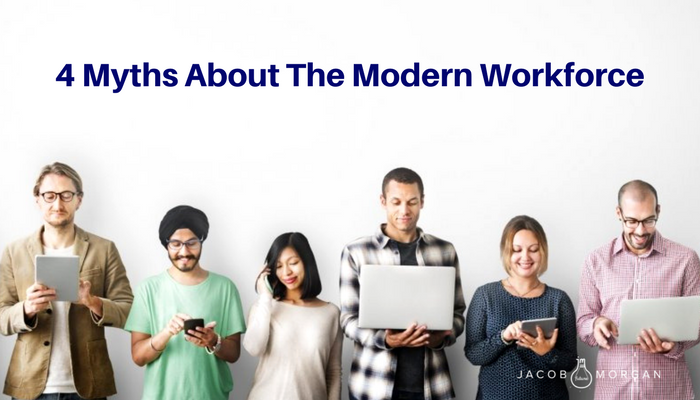
The workforce plays a huge role in the economy as a whole and in each individual company. After all, most businesses invest more time and money in their employees than they do in anything else. The workforce is changing and will continue to transform as we move towards the future of work, meaning that having a strong understanding of the workforce is incredibly important. Tara Sinclair, Associate Professor of Economics and International Affairs at The George Washington University and Senior Fellow at indeed.com, is an expert on the workforce and the economy. Here are four of her myths about the modern workforce and what we can expect in the future.
Freelancers are taking over. Many people have long thought that the freelancer economy was growing exponentially and that gig workers were the hottest trend in the workforce. While more people are certainly turning to freelancing either full time or part time, Tara says the real data doesn’t match the high numbers people have been sharing. Some studies point to a gig economy of more than 50 million people in the U.S., put actual government data says that number is much lower. However, the number of freelancers is definitely increasing and will continue to grow over time.
Middle-skilled jobs are growing. With all the fear of robots and automation taking over low-skilled jobs, not much has actually been seen in that area. However, the area that has seen the most jobs lost due to technology has actually been jobs that require mid-level skills. These people likely have some education and perhaps a college degree, but the jobs they have been trained for are being replaced by technology. The impact of the loss of these jobs can be felt most strongly in lower-skilled jobs because it adds more competition as workers move down to the lower level.
Employee tenure is shrinking. There has long been a misconception that employees, especially younger workers, were bouncing between jobs very quickly and not staying with a single company for very long. That might not actually be the case. Millenials are staying at jobs for two to three years on average, which isn’t much of a change from where it has always been. The biggest change is that most people who are employed are still looking at job openings, even just casually. Nearly 60% of currently employed people check job postings at least once a month, showing that the modern workforce is mobile and ready to move if a better opportunity comes up.
Supply and demand is equal. There is a lot of talk these days about the war for talent, which is enhanced by the growing mismatch between job openings and skilled employees, especially in industries like tech and healthcare. In these fields, there is a huge mismatch between the number of positions and people to fill those positions. That means that when a skilled candidate comes along, tech and healthcare companies, among others, have to compete to sway the employee in their direction. The gap could continue to grow as fewer people graduate in fields that are already seeing a skills gap.
Having a strong understanding of the true trends and misspelling common myths can help companies and employees have a better understanding of the state of the economy. After years of recession, the economy is still emerging, and opportunities are still growing for employees and job seekers. Companies need to be able to adapt their practices to reflect the state of the economy and the desires of employees. For example, flexibility is a huge factor for employees, especially Millenials who seek to have work-life integration. As we move to the future, the ability to be flexible and provide those opportunities could set companies apart to job seekers, especially as we try to balance the number of open positions with the number of employees.
Employees play a vital part in the future of work, and knowing how to best work with them can help companies have a competitive advantage.
My new book, The Employee Experience Advantage (Wiley, March 2017) analyzes over 250 global organizations to understand how to create a place where people genuinely want to show up to work. Subscribe to the newsletter here or become a member of the new Facebook Community The Future If… and join the discussion.



